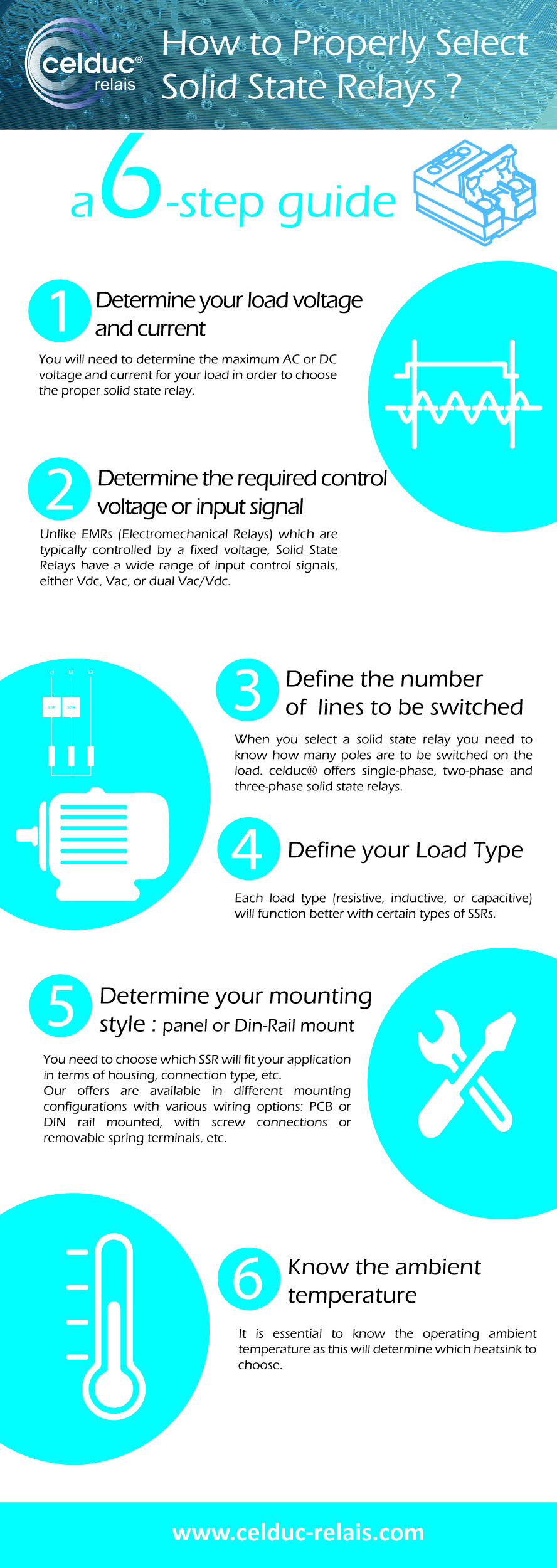Blog - TECHNICAL TIPS & TRICKS - Solid State Relays - How to properly select Solid State Relays ?
Solid State Relays (SSR) are used in a wide variety of applications. Today we are pleased to give you some technical tips on selecting the best Solid State Relay solution for your machinery/control system.
![]()
You will need to determine the maximum AC or DC voltage and current for your load in order to choose the proper solid state relay.
Unlike EMRs (Electromechanical Relays) which are typically controlled by a fixed voltage, Solid State Relays have a wide range of input control signals, either Vdc, Vac, or dual Vac/Vdc. Celduc® relais offers a large range of regulated AC and DC input voltage.
If you wish to proportionally control your load, you’ll need some additional specs to choose the proper SSR. Celduc relais offers some proportional controllers.
When you select a solid state relay you need to know how many poles are to be sw itched to the load. celduc® offers single-phase, two-phase and three-phase solid state relays. For a single-phase AC load, you’ll need a one-pole AC SSR (single phase). For three-phase AC loads, you’ll need to decide if you want to switch all three phases to the load, or if you want to switch two of the three-phases, the third is then directly connected.
Each load type (resistive, inductive, or capacitive) will function better with certain types of SSRs.
Examples : Resistive Loads is best controlled with zero-cross Solid State Relays ; Random Solid State Relays are ideal for Inductive Loads ; for DC Loads, DC Solid State Relays will be required.
Furthermore, for some abnormal loads, specific instructions must be followed to prevent excessive current and overvoltage from damaging the device.
When in use, the switching current flowing through the SSR output should not exceed the rated output current under the relevant temperature, as stipulated in the product data sheet.
You need to choose which SSR will fit your application in terms of housing, connection type, etc.
Our offers are available in different mounting configurations with various wiring options: PCB or DIN rail mounted, with screw connections or removable spring terminals, etc.
The maximum SSR current rating depends on the ambient temperature where it will be installed (High temperatures can reduce the SSR’s current rating). We recommend to mount the SSR on a heatsink to optimize its performance and to reach nominal performance.
It is essential to know the operating ambient temperature as this will determine which heatsink to choose.
We are pleased to share with you our latest Infographics :
